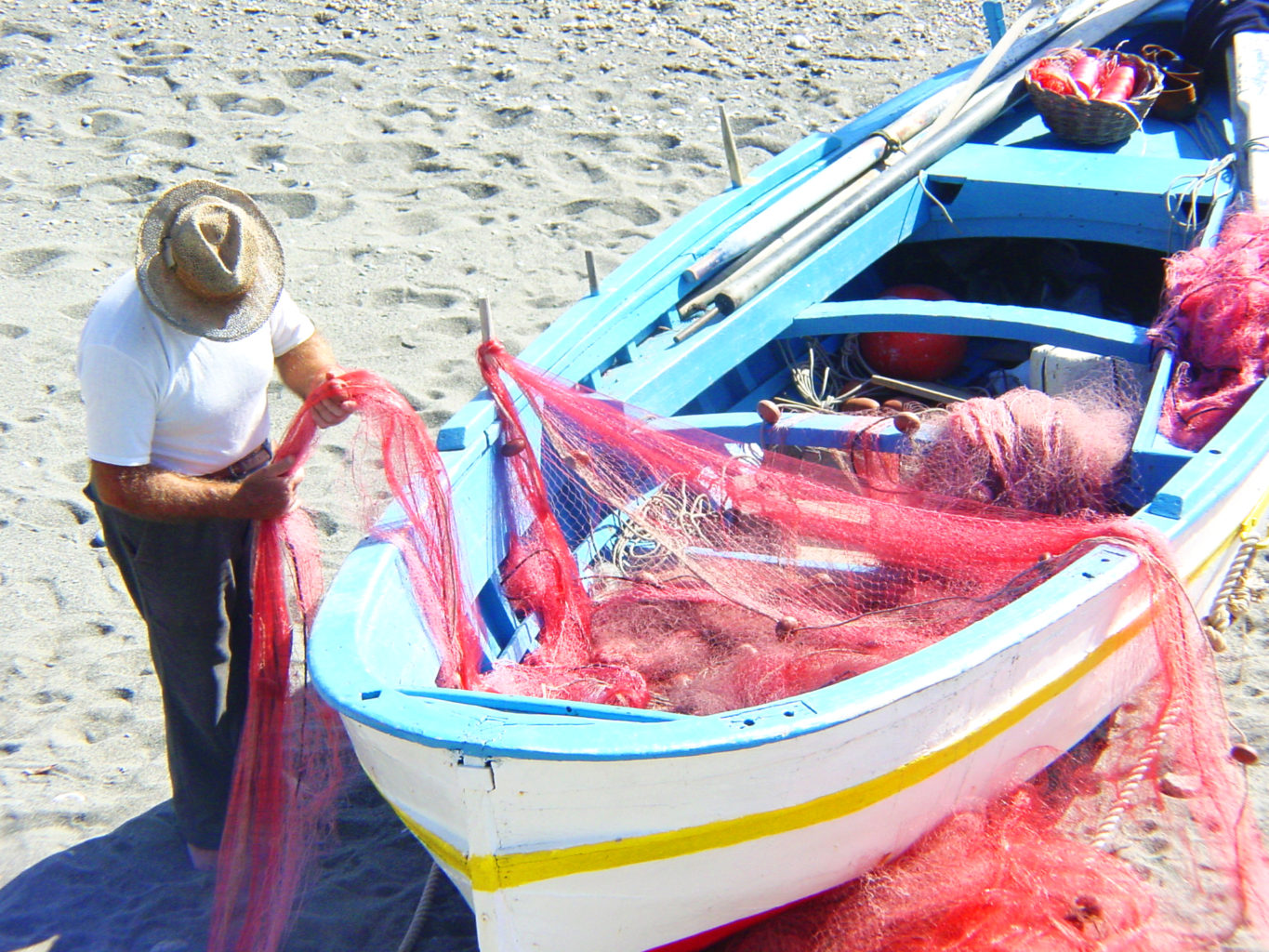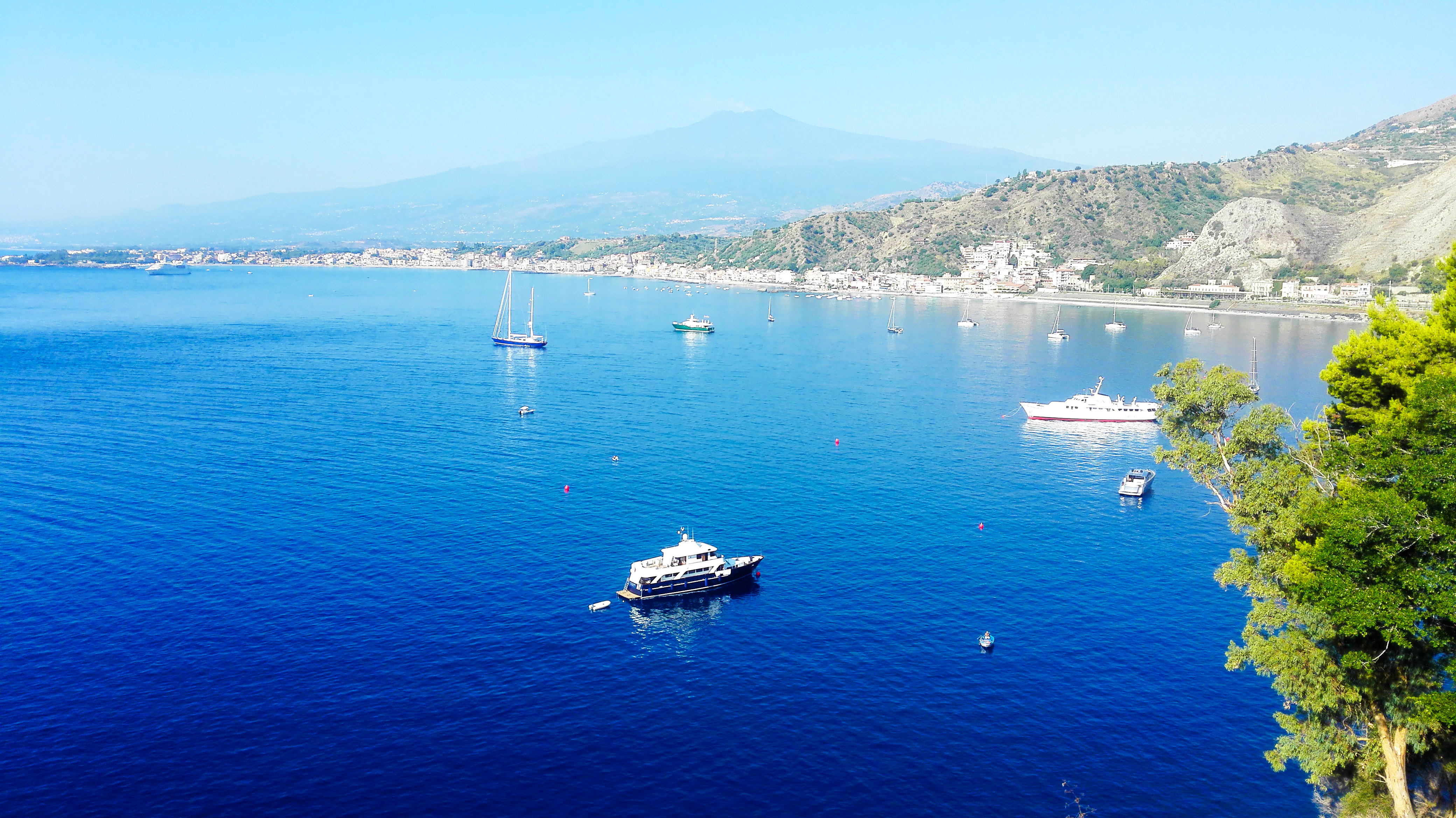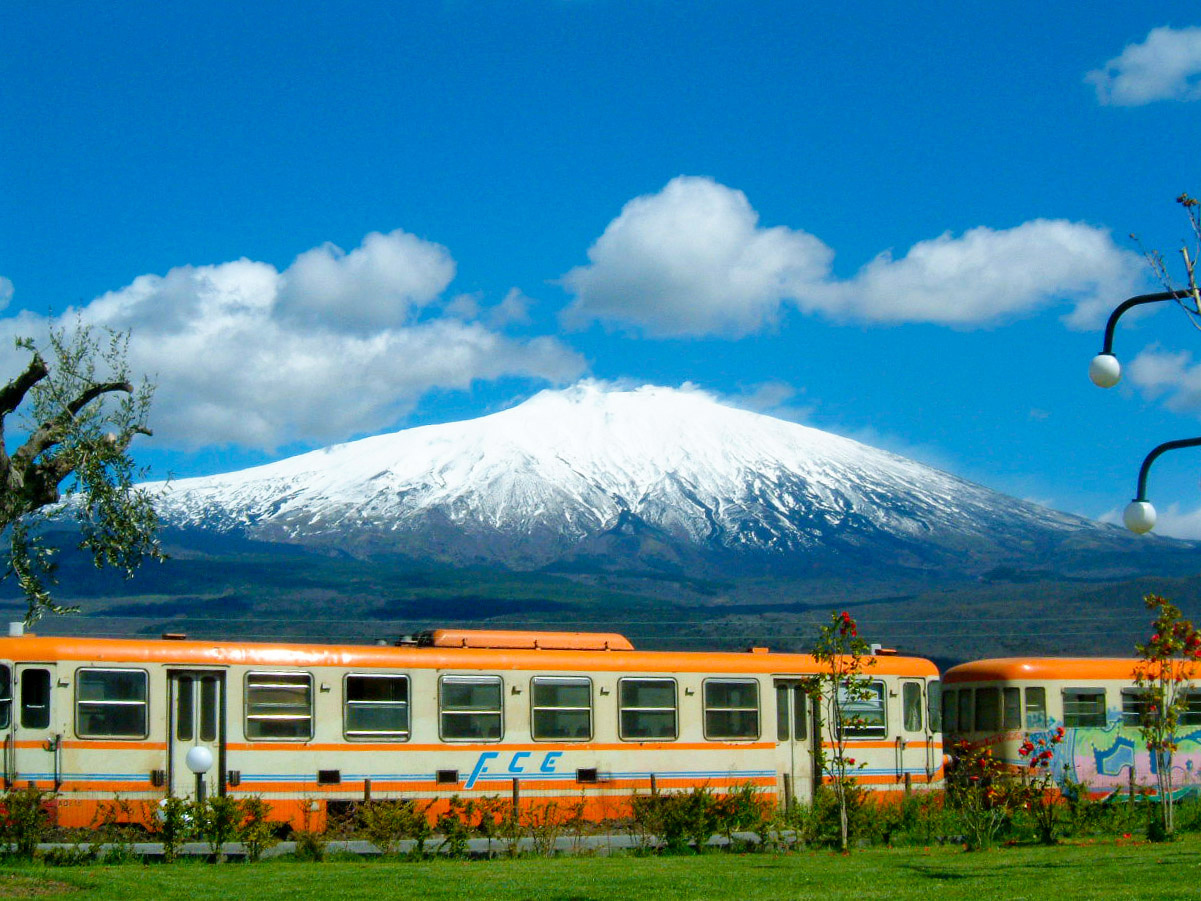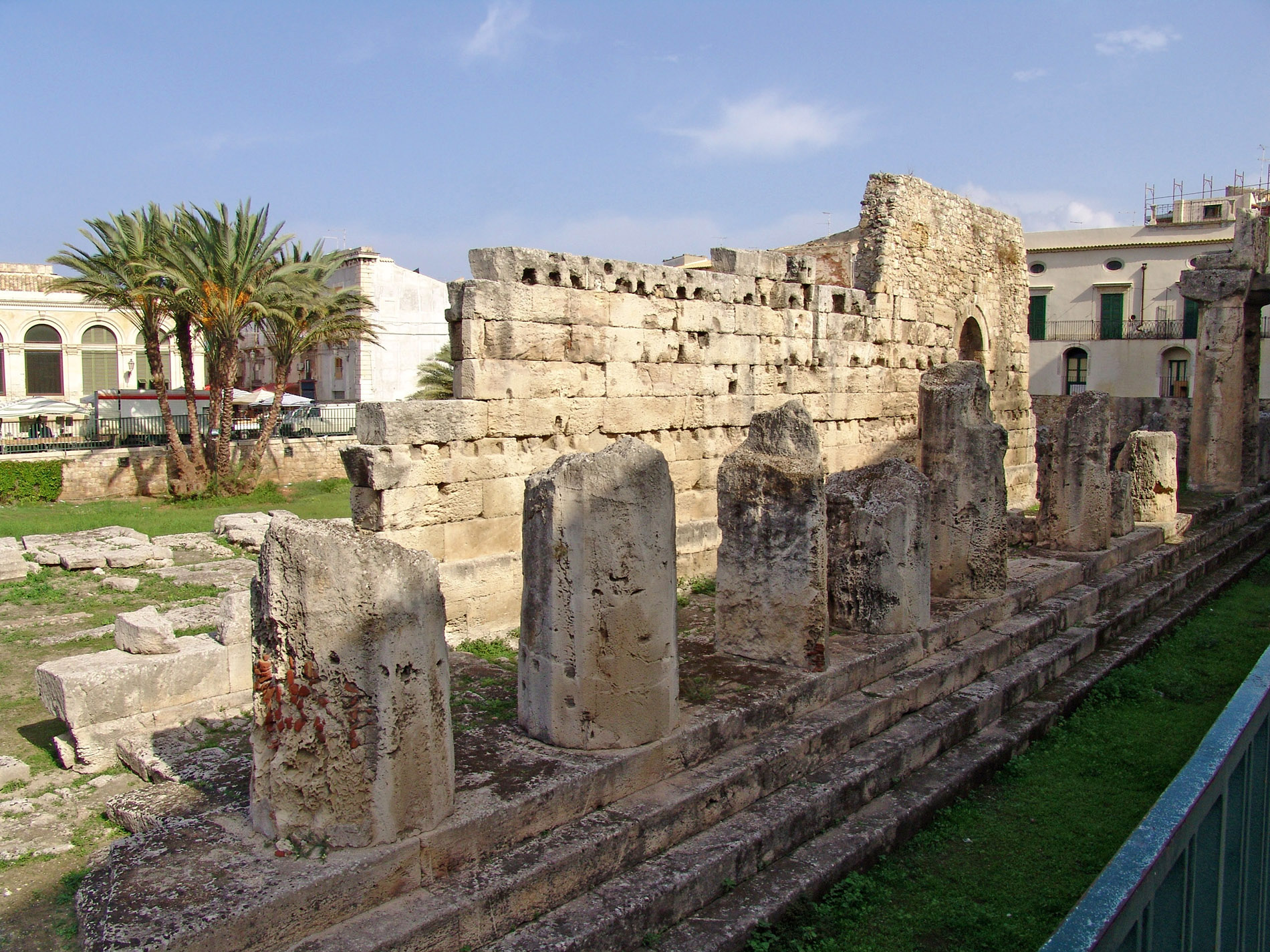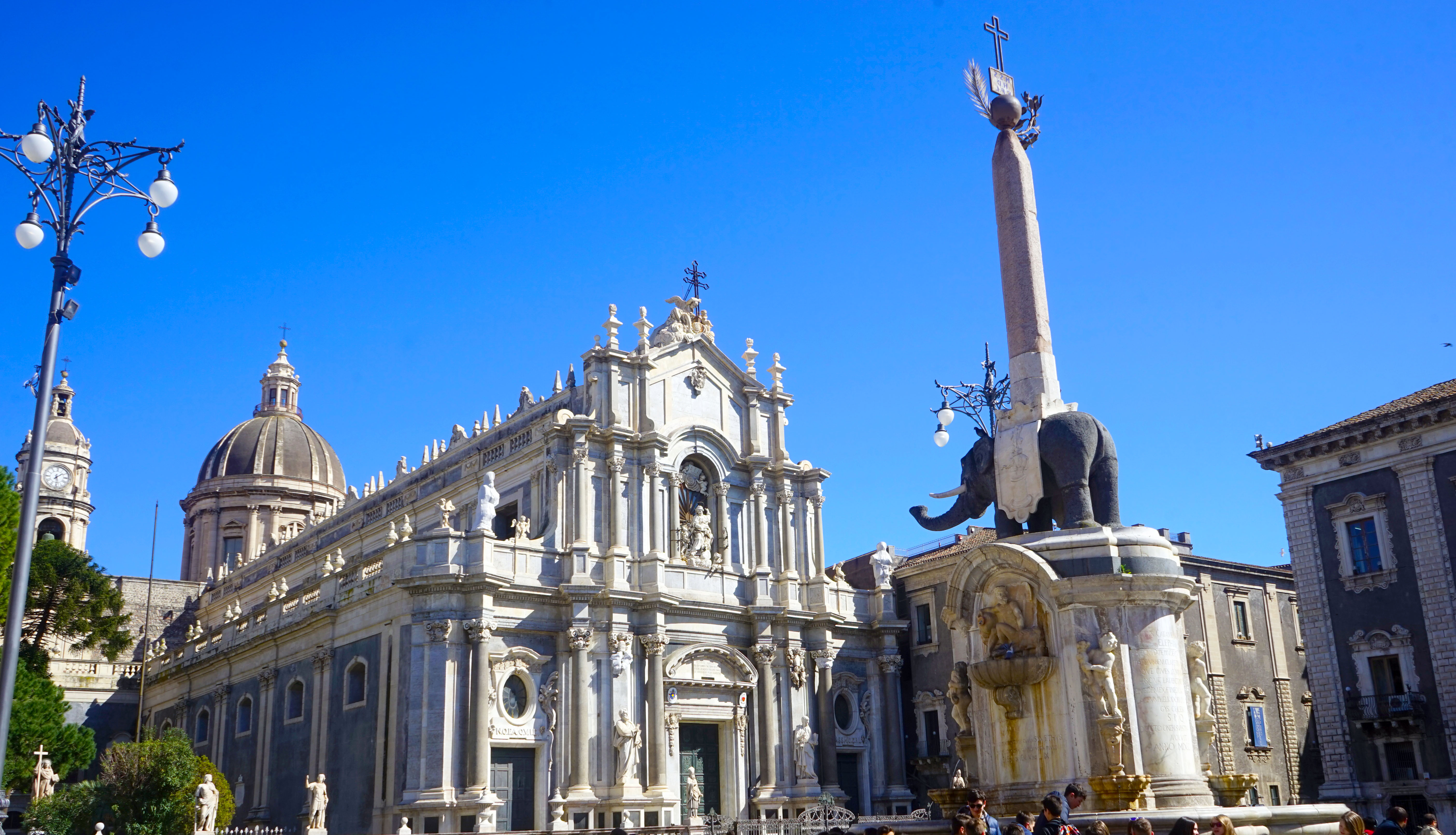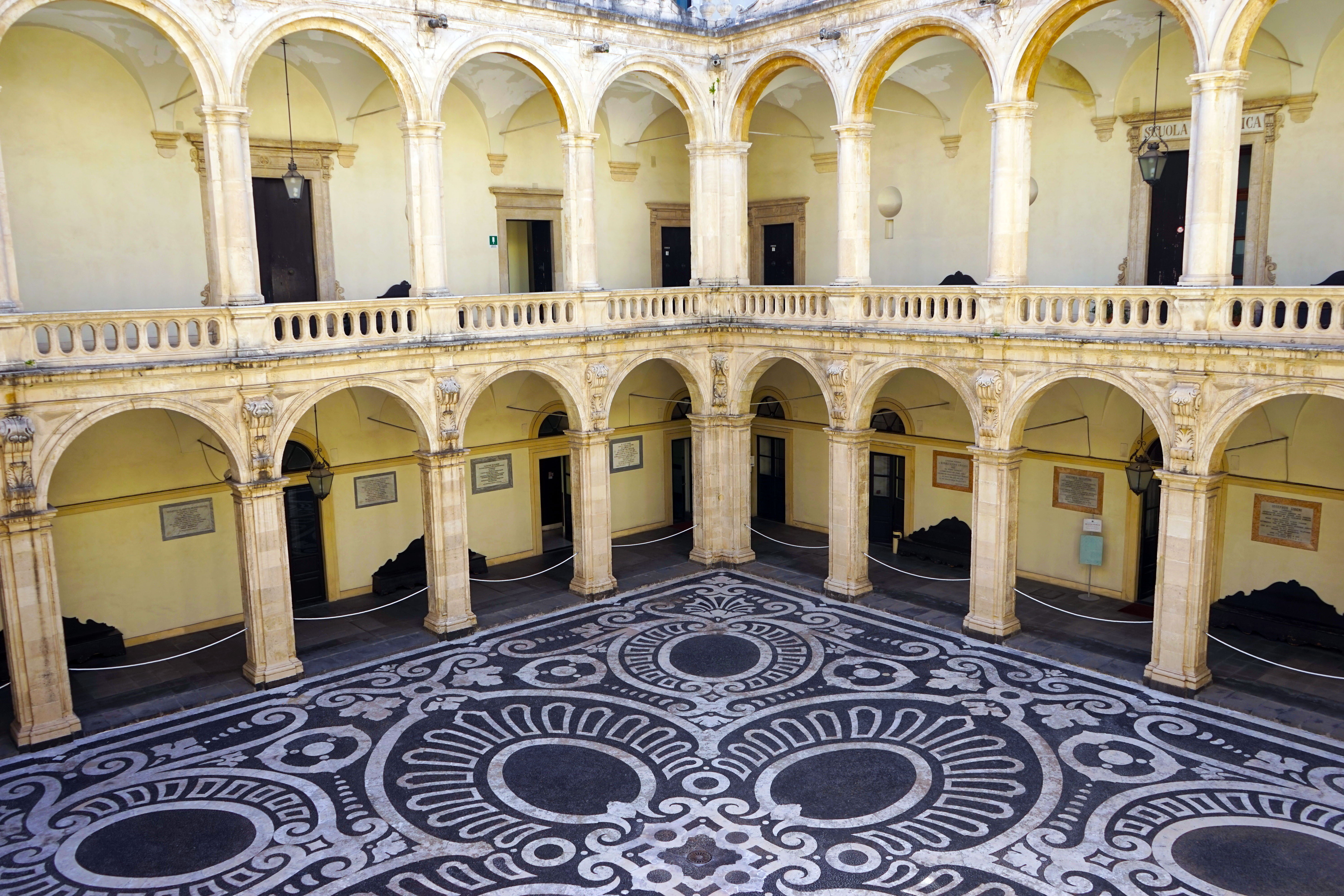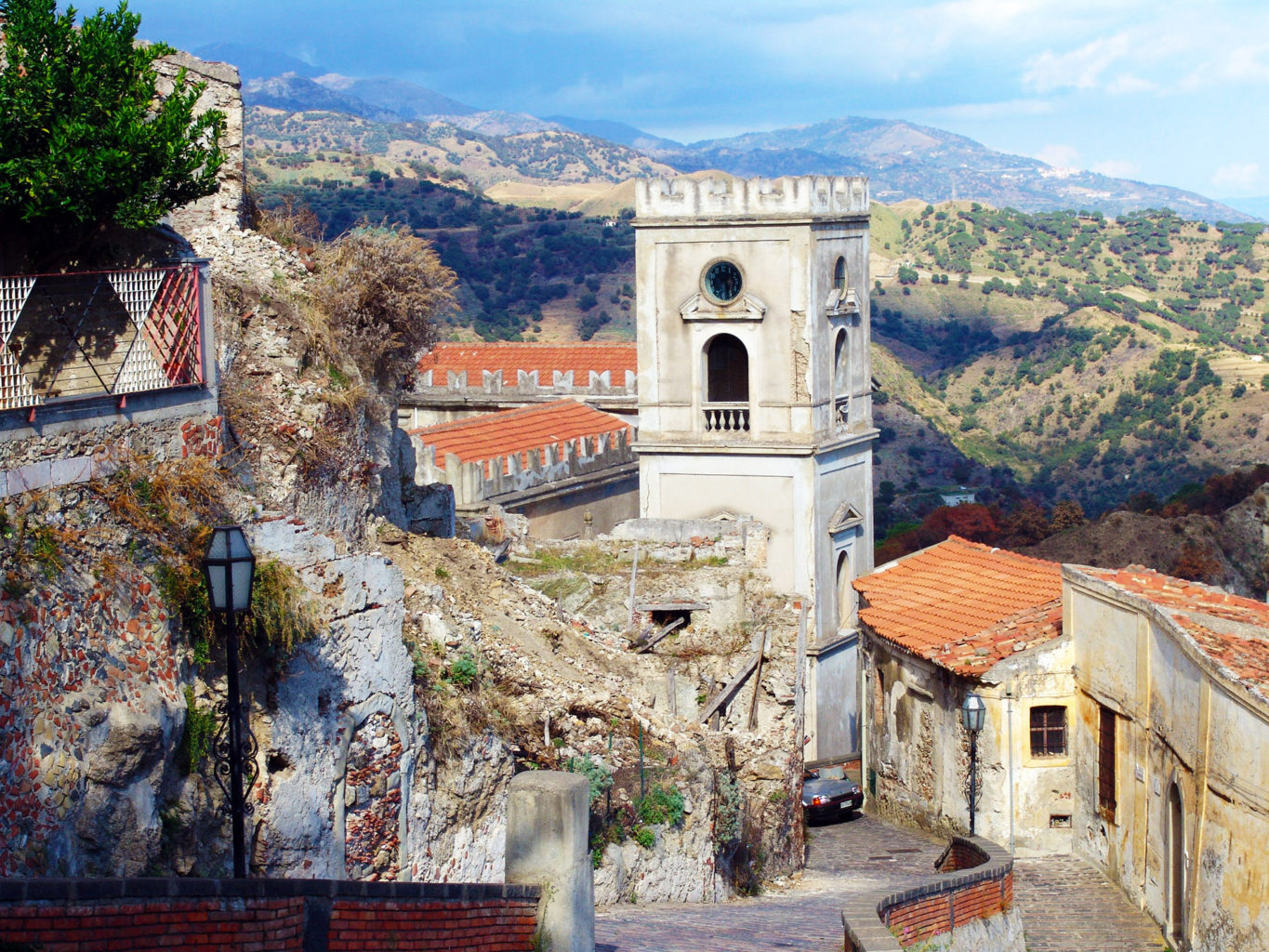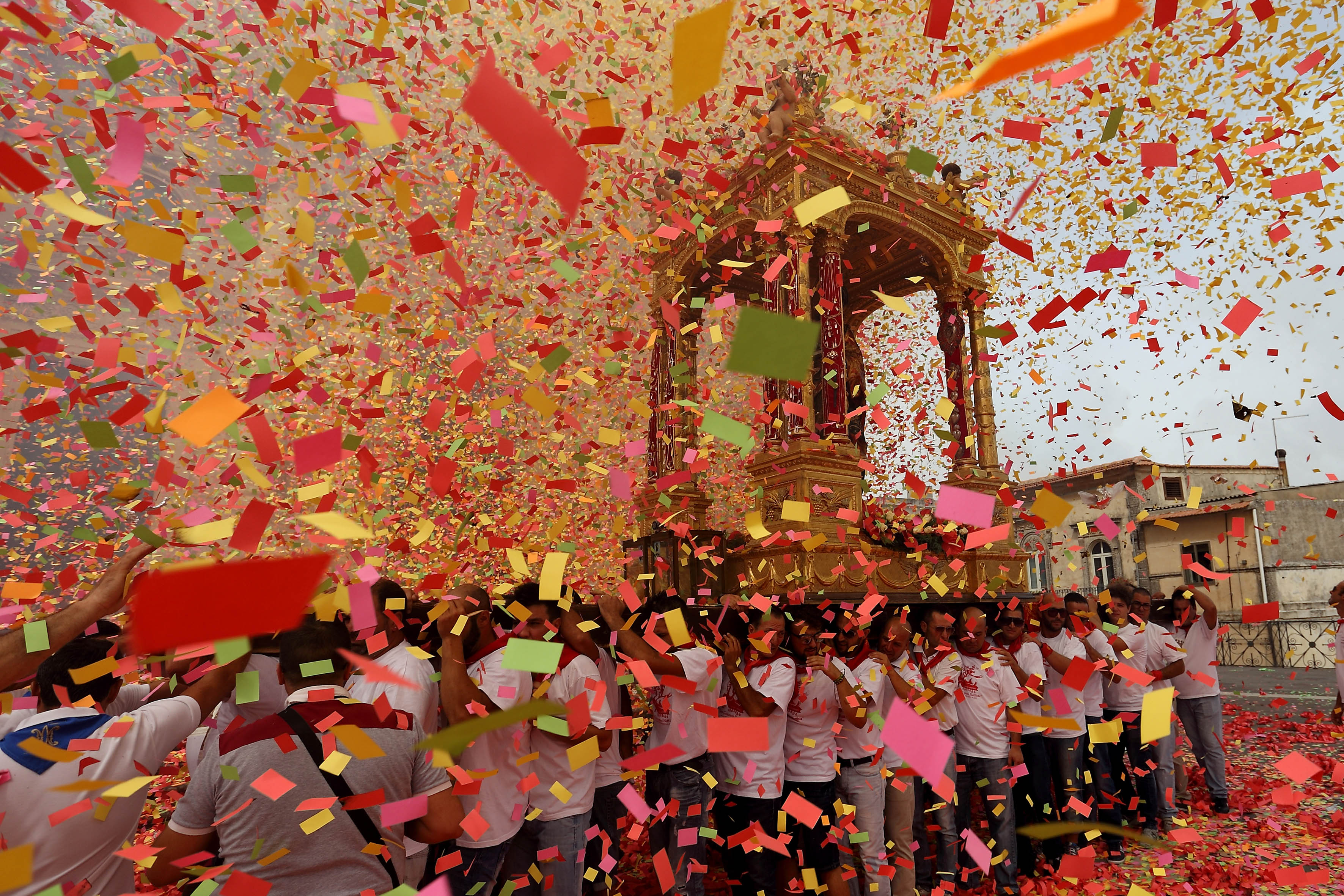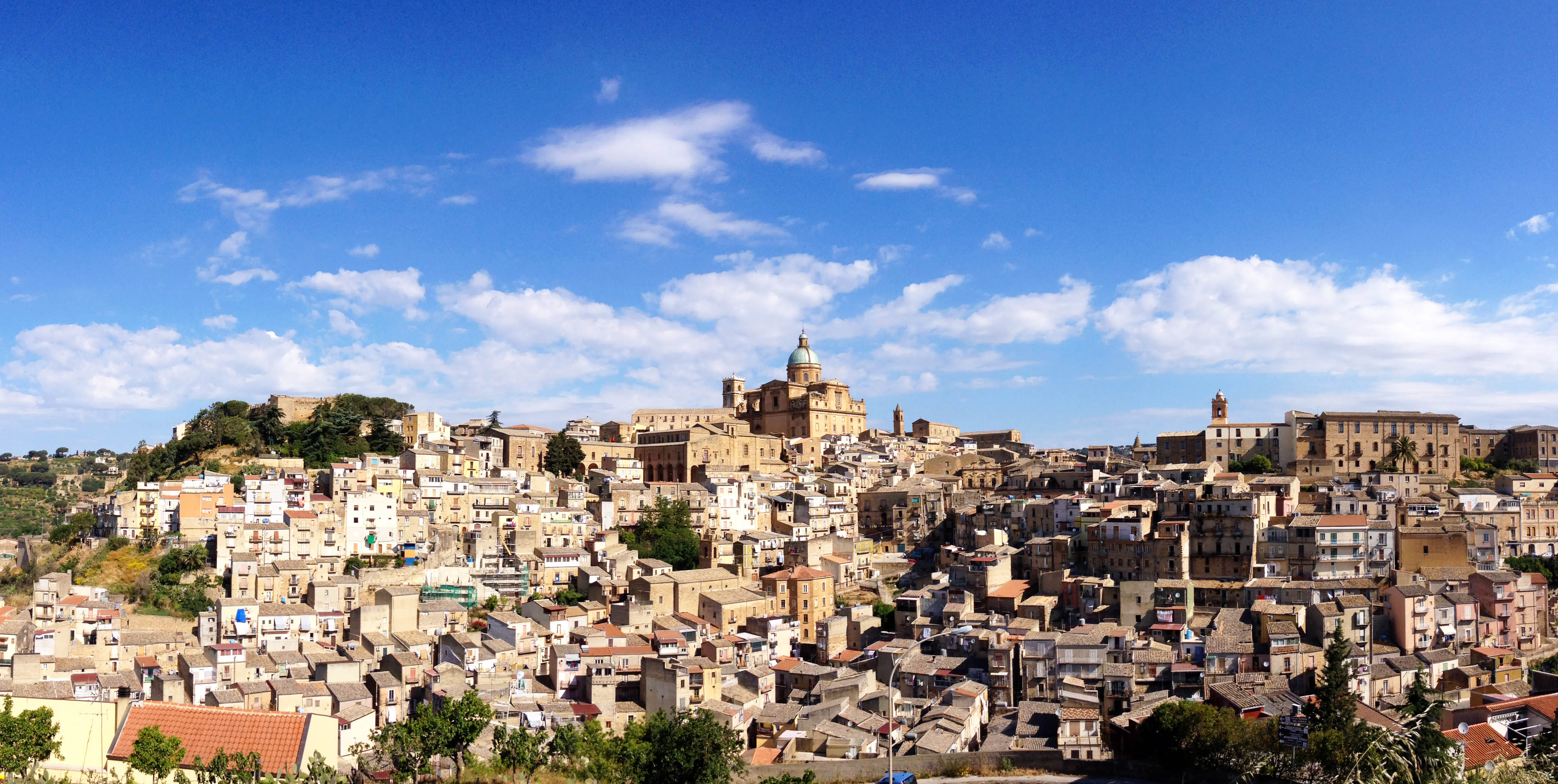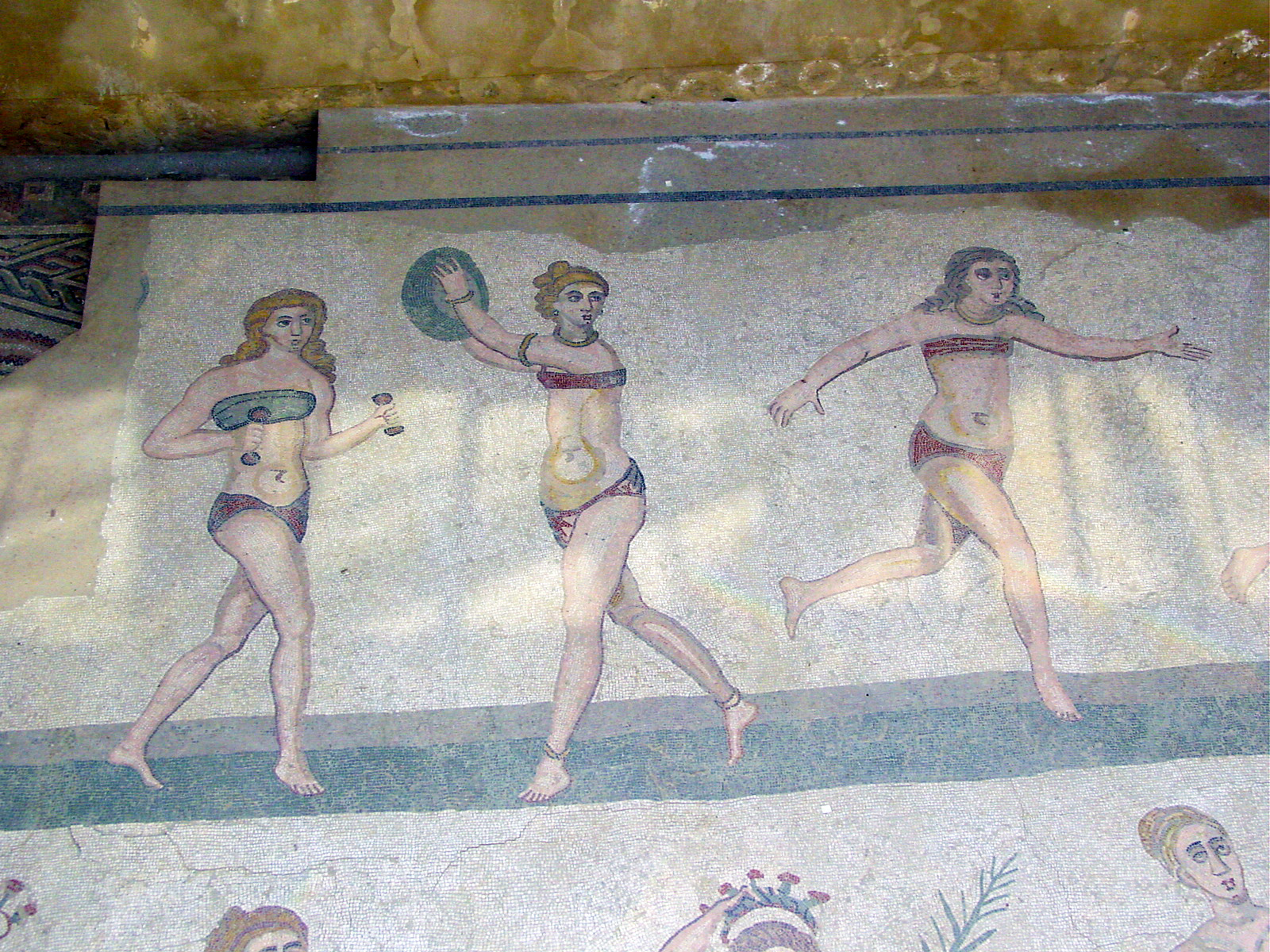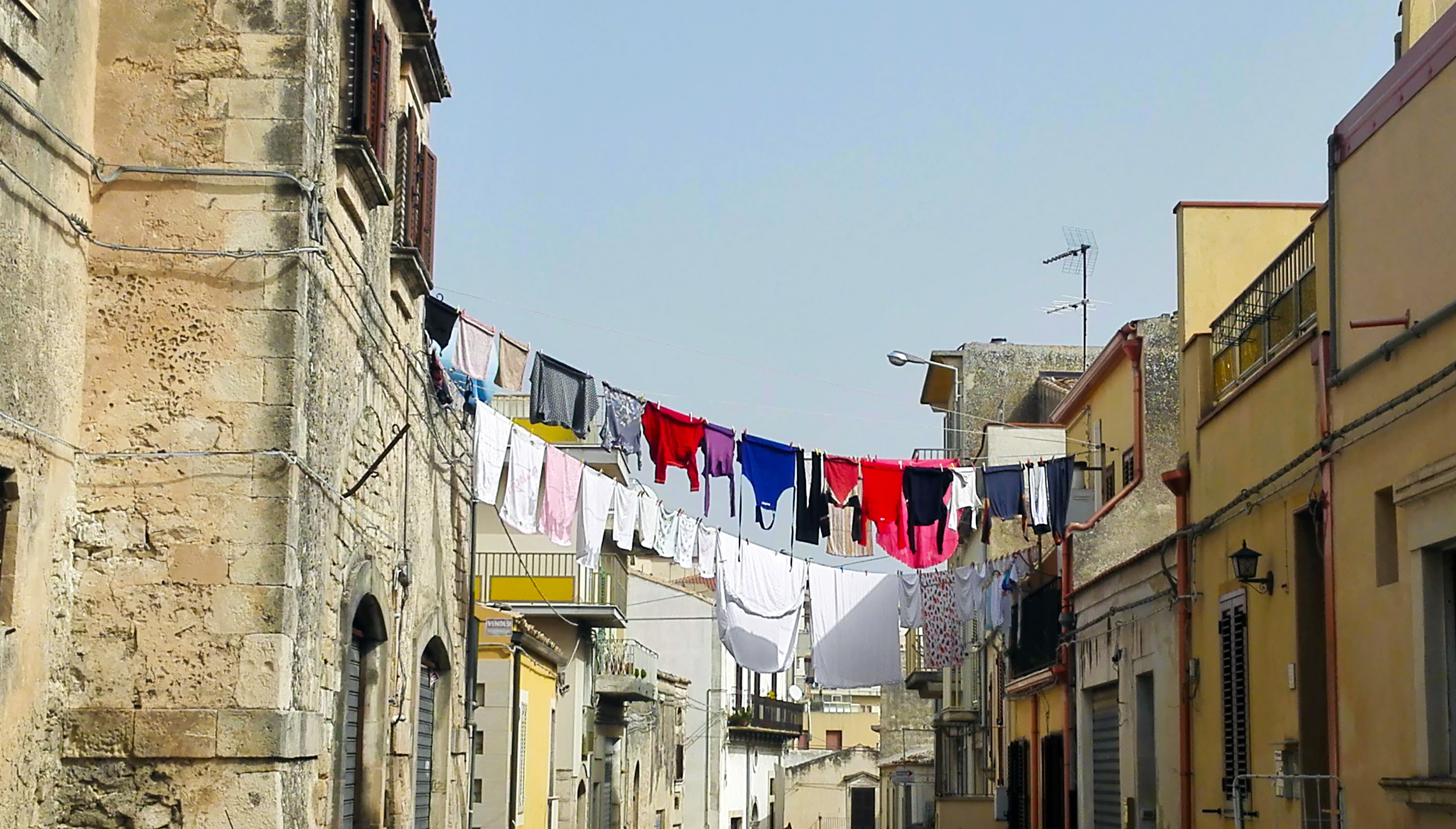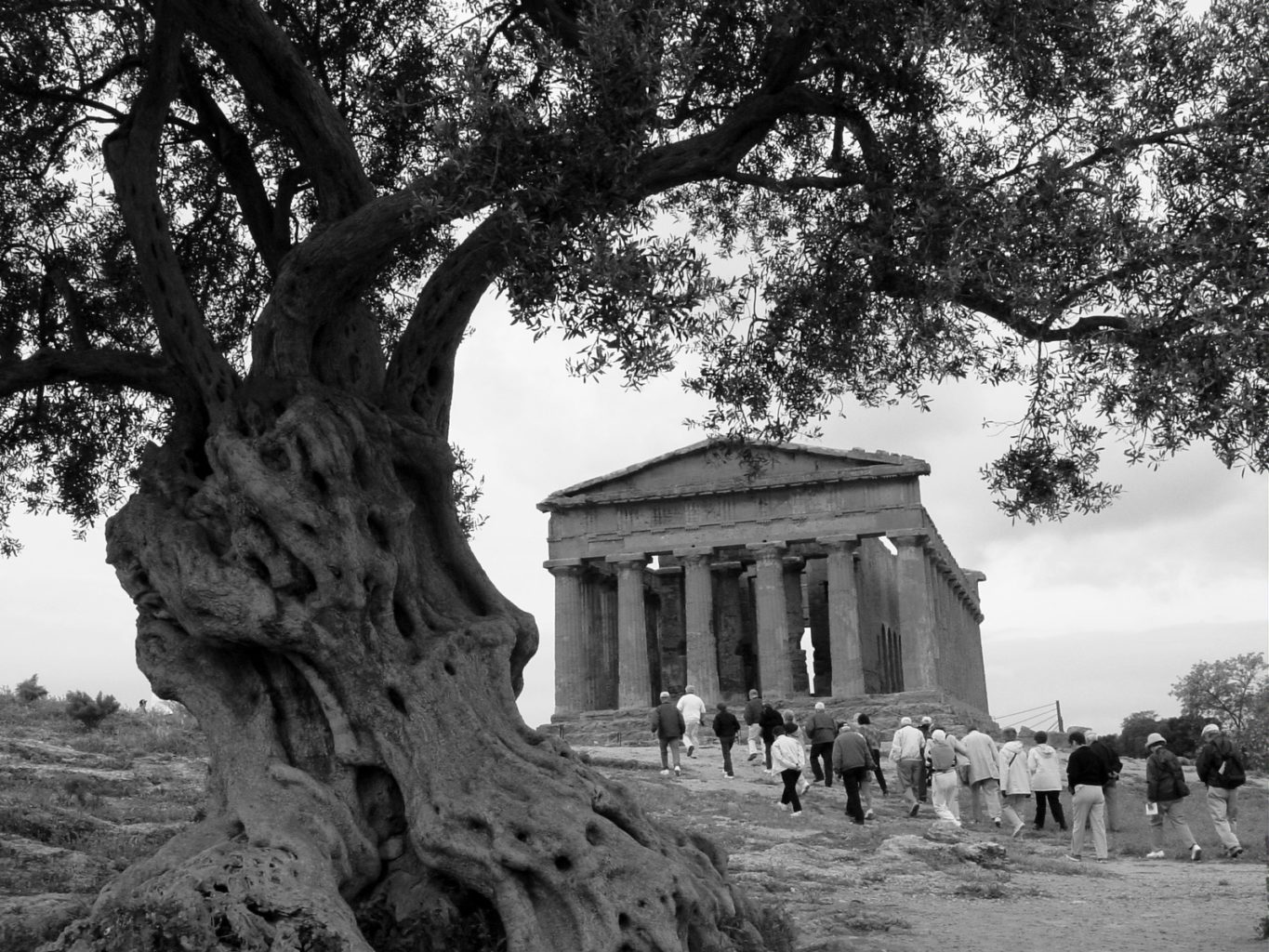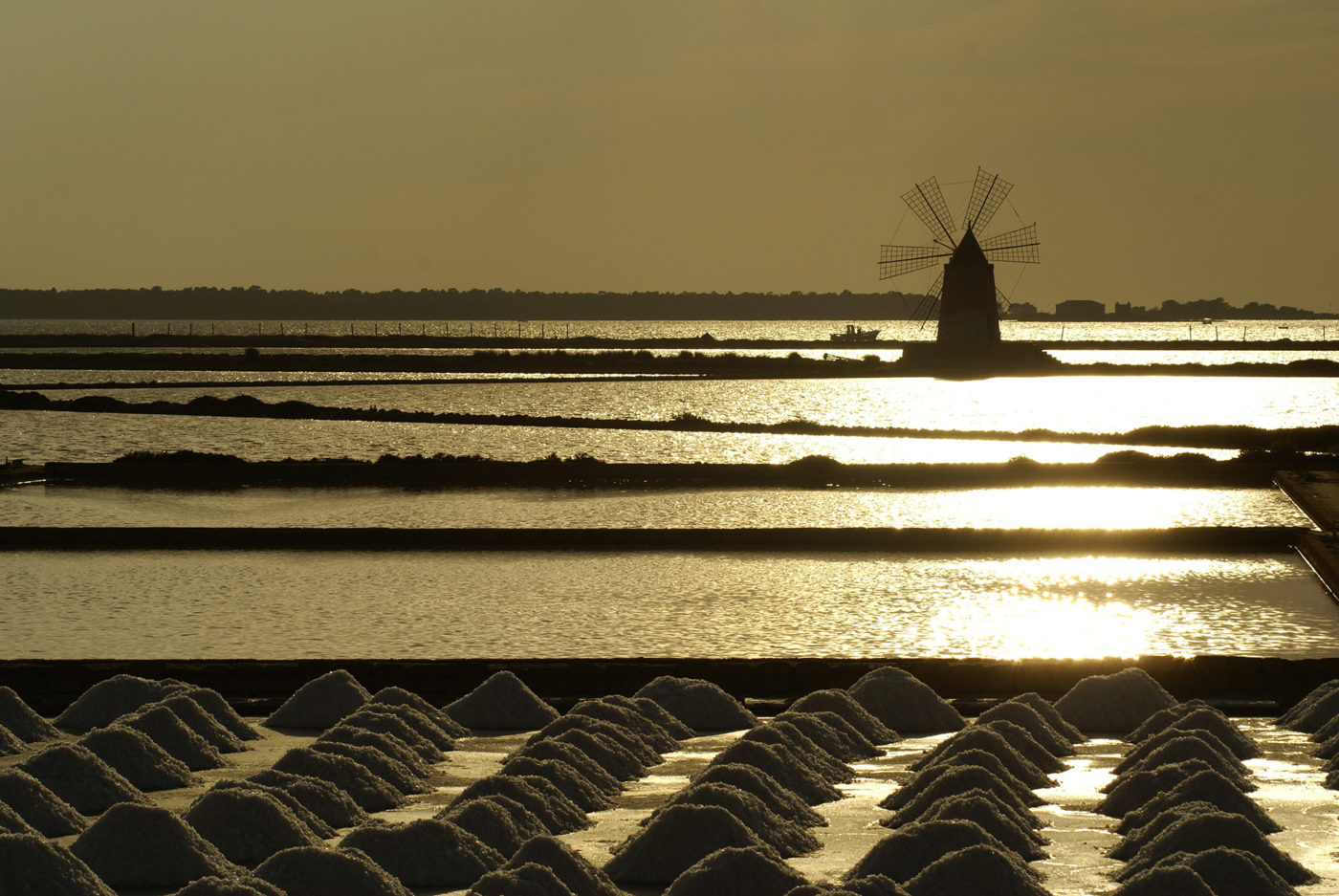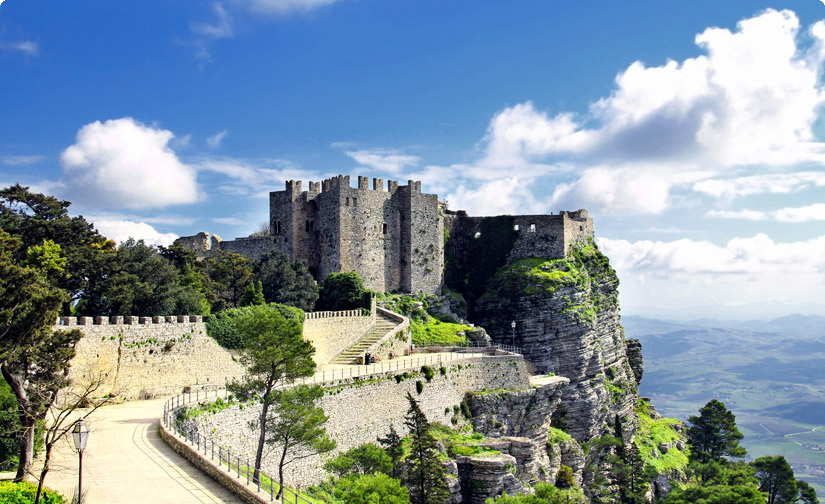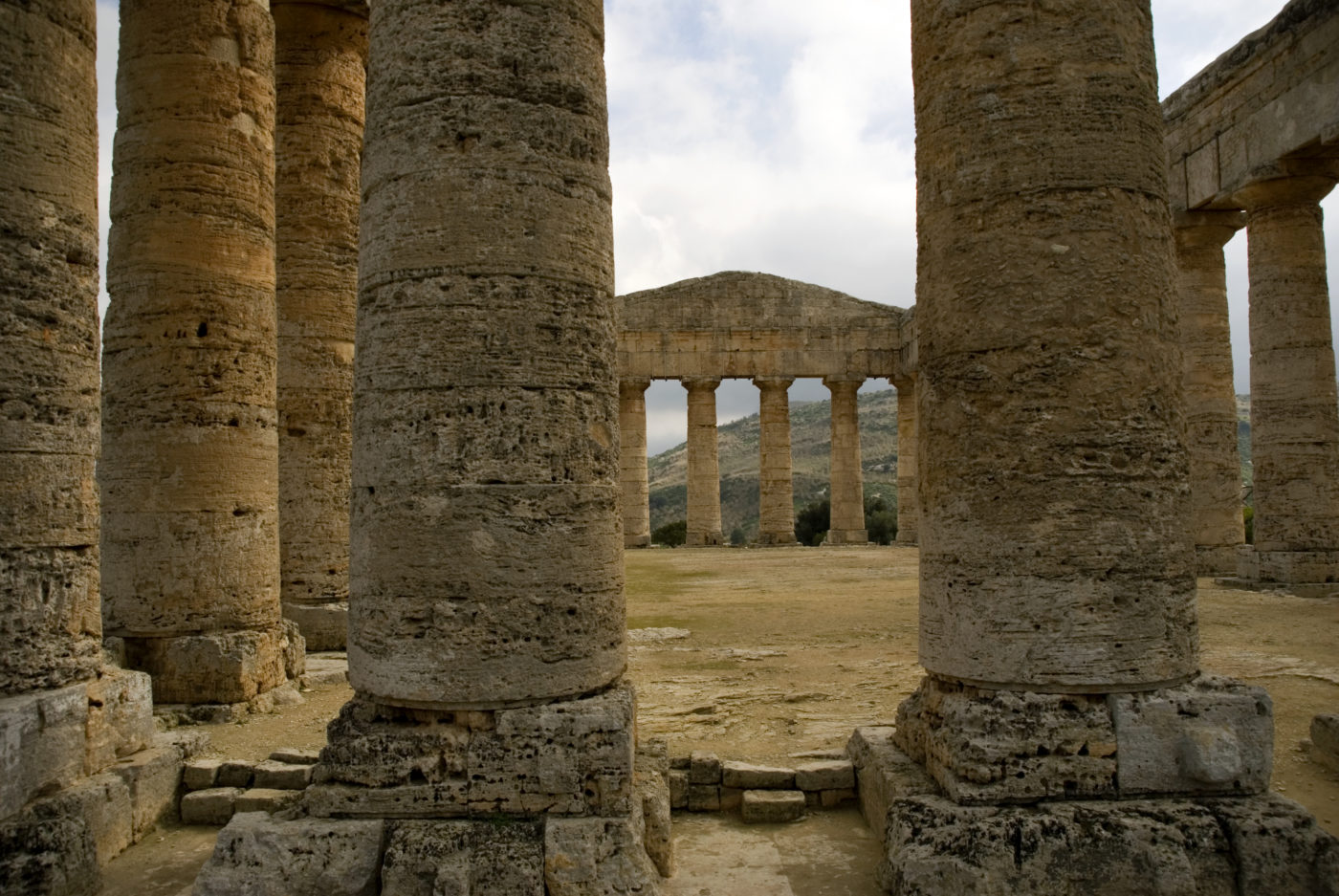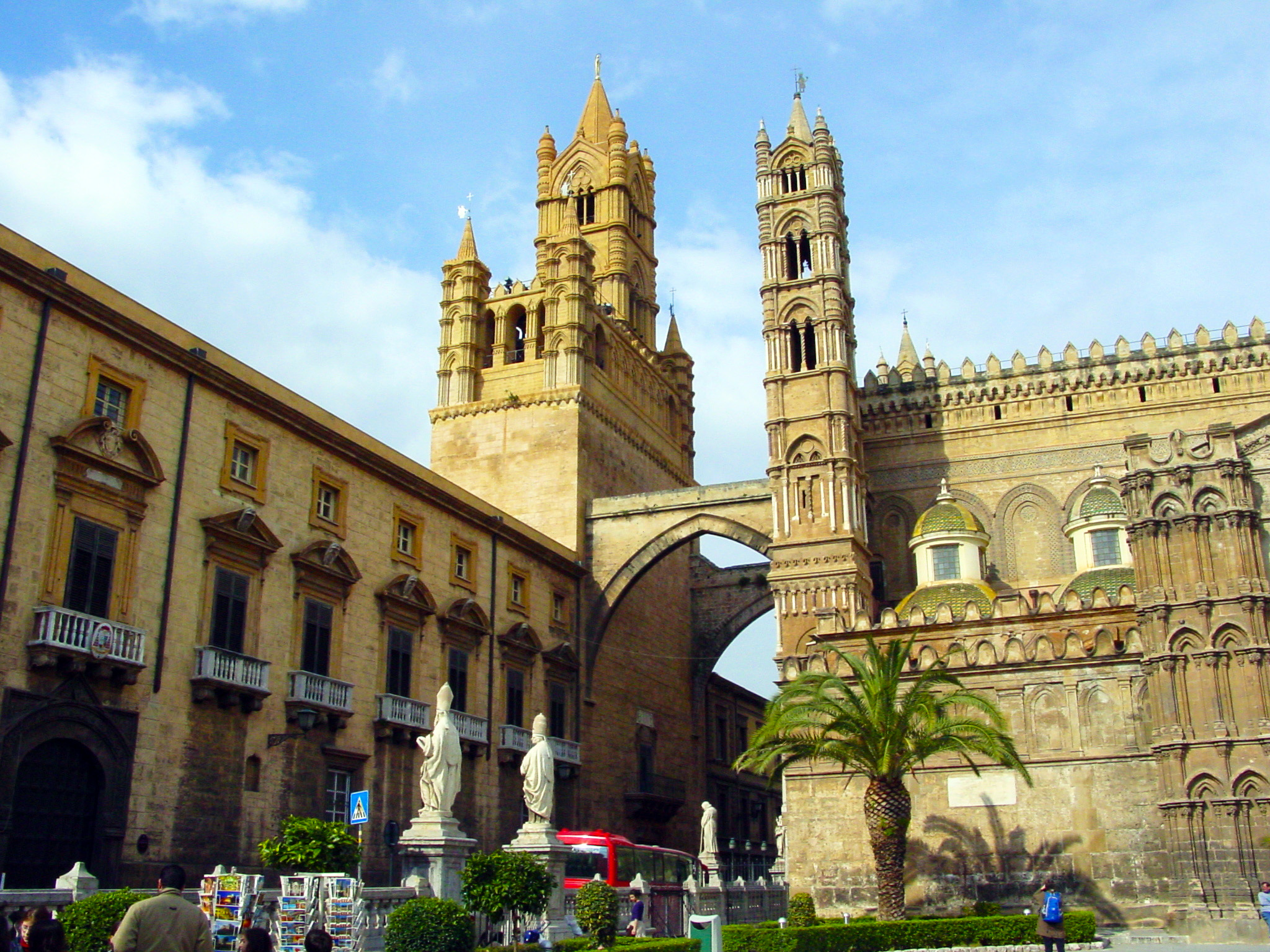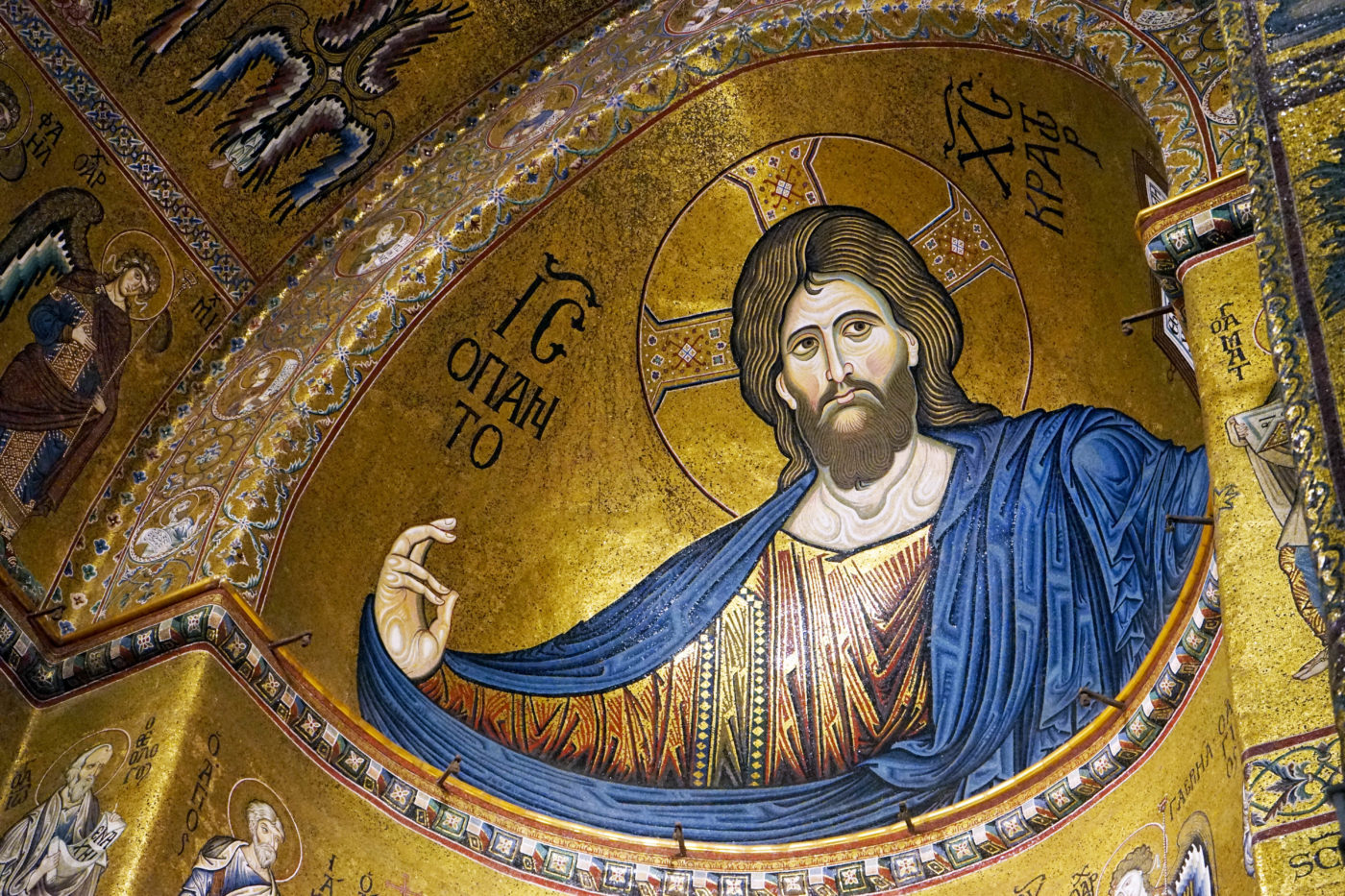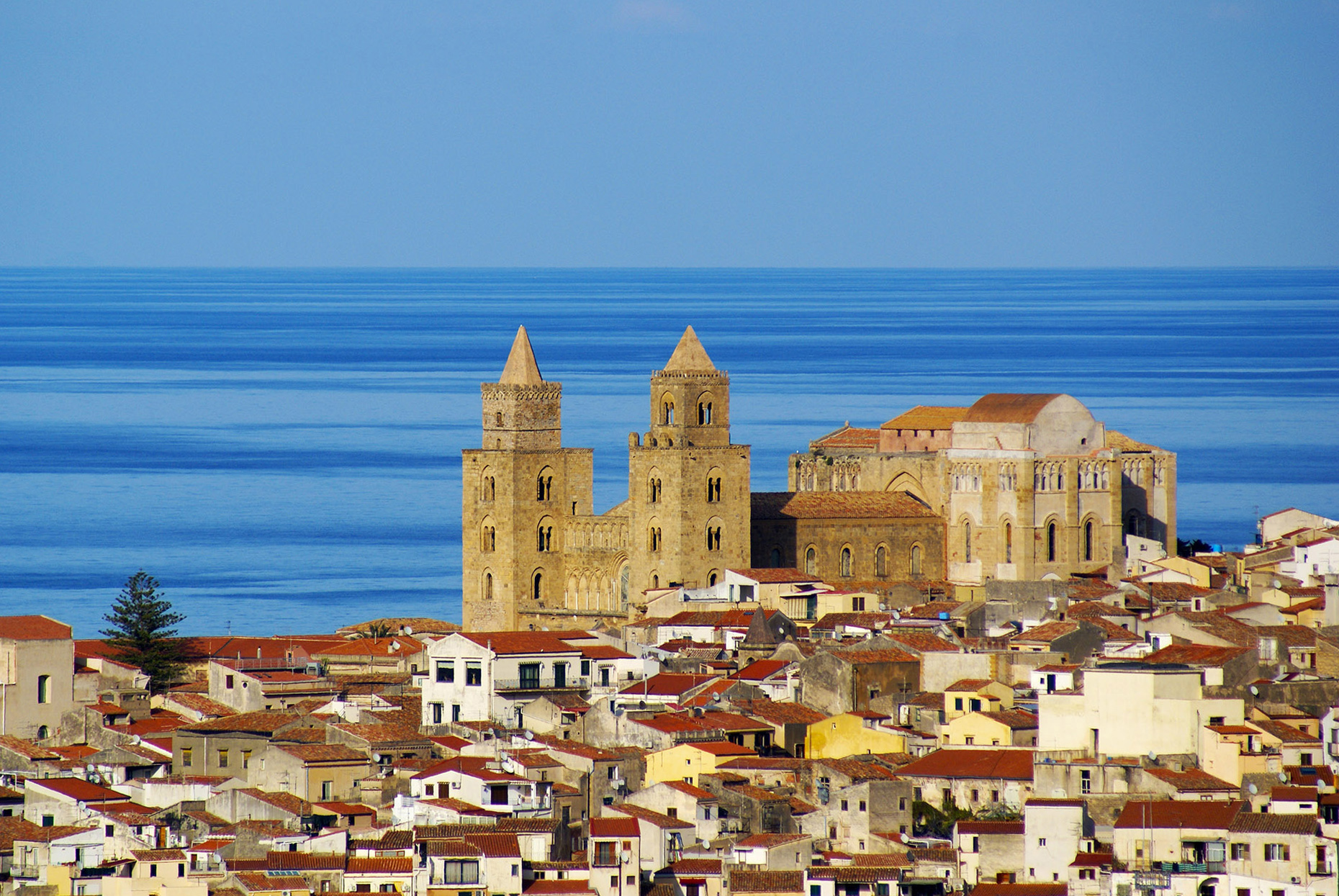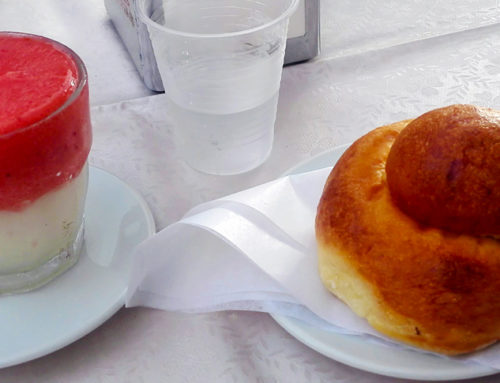Project Description
Classic tour of Sicily – Catania
Weekly
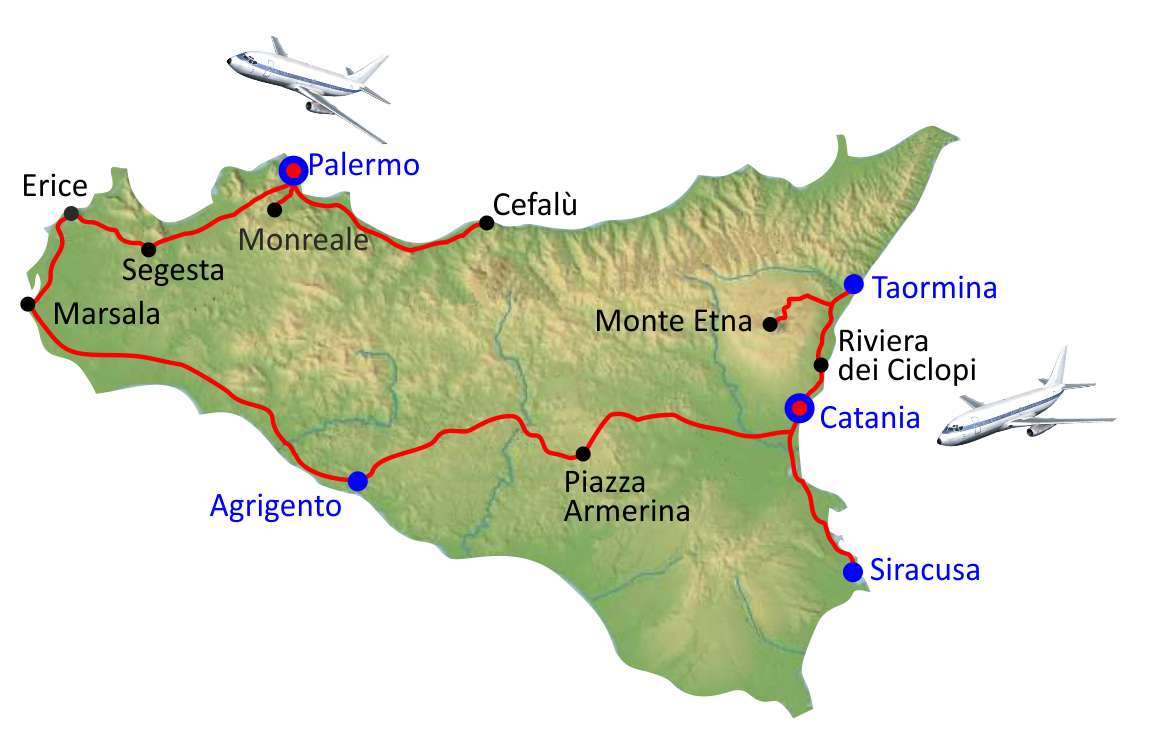
- Airport Pick up in Catania
- Panoramic driving quick orientation tour of Catania and relaxing walk in downtown around the cathedral square, main street and fish market.
- Light lunch or local street food in downtown on your own
- Drive along the Cyclops coast
- Hotel check in mid afternoon
- Dinner on your own in Taormina
Overnight in Taormina
- Taormina walking tour and Ancient Greek theatre
- Lunch in in Taormina downtown or in a nice winery on Mt Etna
- Mt Etna excursion in the afternoon
- Dinner on your own in Taormina
Overnight in Taormina
- Siracusa full day: archeological area and visit of Ortigia
- Lunch on your own in Siracusa
- Dinner on your own in Taormina
Overnight in Taormina
- Depart to Piazza Armerina and visit of the Roman Villa
- Lunch in the area of Piazza Armerina
- Drive to Agrigento and visit of the valley of the temples
- Hotel check in mid afternoon
- Dinner on your own
Overnight in Agrigento
- Depart to Marsala and scenic drive along the salt flats
- Drive to Erice and walking tour
- Lunch in Erice
- Depart to Segesta and visit of the Greek temple
- Hotel check in Palermo late afternoon
- Dinner on your own
Overnight in Palermo
- Guided tour of Palermo
- Four corners, Martorana church, Jewish quarter, Ballaro’ market, Cathedral and Palatine chapel
- Lunch on your own
- Monreale visit in the afternoon
- Dinner on your own
Overnight in Palermo
- Depart for Cefalù and visit of the town
- Lunch on your own
- Afternoon at leisure for shopping or visit museums
Overnight in Palermo
- Departure from Palermo airport
Special features your tour includes:
- 12 Visits of nature, art and historical sites
- 6 Unesco sites visited
And if our reasons are not enough…
- Excellent if you have never been in Sicily before
- Visit almost all the remarkable art and historical sites in the island.
- Cross the entire island all the way from west to east driving scenic coastal road.
- Drive some of the less travelled roads of the rural and unknown Sicily
- Visit authentic small villages off the beaten tracks
- Appreciate and compare the way of living and Sicily life in small villages and big cities
- Discover the fascinating diversities between west and east through the vibrant cities of Palermo and Catania
- Visit the four top destination in the island: Palermo, Taormina, Siracusa and Agrigento
- Spend three nights in Taormina and three in Palermo
- Focus one day on the western coast, very often not covered
- Suitable pacing for those who don’t mind to move often to visit several sites and enjoy different activities
- You don’t pack and unpack too often doing daytrips from the same place
- Dine out at leisure every evening picking your own food choice and restaurants (dinners on your own)
ART HISTORICAL SITE AND NATURE FEATURES
- Catania – Cyclops coast
- Siracusa – Archeological area and Old town Ortigia
- Taormina – Greek theatre
- Mt Etna – the most important volcano in Europe
- Piazza Armerina – Roman villa with stunning mosaics
- Agrigento – Valley of the temples
- Marsala – Salt flats and windmills
- Erice – Medieval stone village
- Segesta – Greek temple
- Palermo – Four corners, Martorana church, Palatine chapel
- Monreale – Duomo
- Cefalù – Duomo and medieval fishing village
Taormina is one of the top and most beautiful destinations in Sicily.
The town has a rich history, prestigious writers, artists and important personalities have travelled or stayed here.
Among them: Goethe, D.H. Lawrence, Guy de Maupassant, Oscaf Wilde, Brahms, Liz Taylor and more recently many movie stars due to the Film Festival which takes place every year in town.
Stunning cityscape, public gardens, theatre, aristocratic buildings, piazzas and side streets, beaches and seascapes attract you and offer uncountable itineraries if you just choose to stay in town or visit the surroundings for a day trip.
The town is divided in two parts: the upper part good for visits anytime of the year on the slopes of a mountain and the beach side, great for the good season time.
A stroll along the main street “Corso Umberto” is a must for shopping lovers, while food and wine conosserurs will be captivated by the many gourmet or family style restaurants. Luxury hotels, among the best in Sicily, the vicinity of Mt Etna and the good connection with Catania and Siracusa, makes Taormina one of the most convenient places to stay if you want to explore the eastern side in Sicily.
The town dates back to the Greek time thanks to a group of refugees from the nearby Greek colony of Naxos which build the base of the world famous Greek-Roman theatre today. Several cultural experiences through its invaders, later on, will make the place a beautiful blend of monuments, buildings, palaces and churches which today are quite evident anywhere in town.
The nice weather all the year round, the great views and stunning landscape and the fame spread by the prestigious many visitors make Taormina one of the most popular destination for wealthy people starting from the mid fifties until today.
The main square and the many little medieval backdrops are framed between the shape of Mt Etna and the blue water of the Ionian sea.
The Greek theatre is one of the iconic attractions in town as well as Palazzo Corvaja, Piazza IX Aprile, the Duomo and the public gardens. Isolabella bay and the other beaches of Mazzarò and Mazzeo down below along the coast. These places are a must if you like swimming or just enjoy heavenly views.
Etna is the highest active volcano in Europe. Its elevation is roughly 3350 meters and it actually changes often due to any new baby volcano arising on top. The wide variety of the many known phenomena connected to volcanism makes it a living laboratory and a sort of school for geologists and volcanologists coming from worldwide. The volcano is also one of the seven world heritage sites of Sicily, the first natural park and protected area created in Sicily since 1987 and the largest since it covers almost one twentieth of the total extension of the island.
The Etna National Park is divided in two main areas. The lower part charachterized by human activities, villages, fields and vineyards while the upper part has flora and fauna which do not compete with any human beeing activity.
Chestnut trees, larches, firs, Oaks, poplars, beaches and endemic shrubs that grow on the bare lava rock are the most notable elements of local flora, while the fauna has foxes, wild boars, snakes, hedgehogs and sky hawks, owls and nocturnal animals and even the golden sea eagle.
Botanists say that about 70% of the species in the Mediterranean live on the slopes of Mt Etna thanks to the latitude of the volcano and to the different climatic areas, about seven, ranging from subarctic to subtropical, from summer to winter, from the bottom to the top.
Perhaps the real surprising value of ascending the slopes of this volcano is the drive up and down along its sides: South coming from Catania, eastward from the Ionian riviera and North side of the medieval city of Randazzo along Linguaglossa.
When you cross the many typical villages of Etna you share the simple life of peasants on street corners still selling products which are cultivated here all year round that also characterize different types of Mediterranean flora: olive trees, figs, fruit trees (apples, peaches, pears), prickly pears, oranges and lemons. The grapes here produced in its best variety is called Nerello Mascalese small, rich and juicy.
Any product cultivated here is enriched by the nutritious of the volcanic sand, highly productive natural fertilizers that make this land very fertile and really blessed. The proximity of the sea and salt moisture brought by the salt water, the typical volcanic soils, exposure of the vineyards combined all together make one of the best red wines of Etna in Sicily and give high credit to quality constantly increasing from year to year in Italy.
Although the territory was characterized in the past by several volcanic eruptions as witnessed by about 135 historical eruptions, the inhabitants always get benefits from a volcano they consider good natured and often associated with the most reassuring female figure of a mother, reason why local people give it the nickname of Mama Etna today.
Most of the eruptions that occur often flow into a large natural Valley called valle del bove (for its arched shape resembling the horns of a cow) which does not concern the local population.
The history and economy of Catania have always been connected in a close inseparable relationship with Mama Etna or Muntagna or even Idda (simply She…) to describe the female character of the volcano which makes fertile flat lands and provides extensive neighboring abundant stone to rebuild the places covered by lava flows.
The volcano is one of the few in the world that allows you to ski in the morning and possibly an afternoon at sea in spring or early fall . The Summit of the volcano has two different sides exploited by touristic activities: south and north. The southern side offers views of Catania and his plain, but also the possibility of travel by funicular railway and continue by Jeep 4 x 4 wheels up to a maximum height of 2800 meters.
The southern side receives most of the tourists since it offers more facilities with shops and restaurants.
The northern slope is less known by tourists. Here you can combine a visit to the delightful and authentic medieval village of Randazzo and a scenic drive through an old wood of centenary forest of pines which is unique in Europe. Beyond the forest lies the lunar landscape and overwhelming 2004 eruption lava fields where you see huge pines surfacing as broken pencils from the black lava sea that seems to still move around.
The entire circumference of the volcano is crossed halfway up by a narrow railroad track that connects and passes through cultivated fields and all the villages area of a full circle around Etna. In a few hours, departing from Catania, the train ferrovia circumetnea railway completes a tour offering breathtaking views and the exclusive meeting with locals, simple farmers or young students.
Catania is the second largest and populated city in Sicily after Palermo with about 500,000 inhabitants living in the greater metropolitan area; the area includes part of the villages of the southern slopes of Mount Etna.
The city has always been characterized by a tight connection with Mama Etna or a Muntagna (the mountain) or even Idda (she) to describe the good-natured female character which over the centuries and still today has influenced the history, economy and social moments of the city. Catania is said to be resurrected several times due to catastrophic events such as volcanic eruptions and earthquakes that have from time to time marked death and destruction, but also beautiful rebirth, vitality and initiative that still characterize the lifestyle and somehow the mentality and attitude of its inhabitants.
Such a close vicinity to the volcano has given fertility to the fields due to volcanic ash and minerals, but also abundant stones for the construction of roads, monuments, churches and buildings that are the hallmark of the visit of the city and the surrounding area.
Here the history and arts have shaped the city landscape according to the architectural trends of the historical moment. The Baroque style of the reconstruction after the earthquake of 1693 is the latest and most visible sign today thanks to the original architectural innovations and the distinctive black-and-white colours of the local white limestone and lava anywhere evident on monuments.
Catania today is a city that deserves to be explored on foot around piazza Università, Piazza Duomo and especially along Via Etnea, the main street that cuts through the city from South to North. Behind and at the end the background of Etna, always steaming and looking down at the town with good natured attitude and its round shapes gently sloping down to the Ionian Greek sea.
From here in 729 BC Greek settlers land from faraway territories to found a colony on uneven terrain, hard to cultivate (hence the term Katanè), but which on the other hand ensured a safe harbour, abundance of water and navigable rivers. The first orientation of the Greek city is thus developed from East to West and follows today the second most important street axis of Corso Italia.
This town orientation changes because of the events of the earthquake that destroys and washes away the Roman and medieval city; the new seventeenth century city is now rotated of 90 degrees and runs from south to north. The Corso Italia today shows a few Liberty building, modern, art nouveau buildings and important squares like the Palace of science, but also controversial modern buildings built in the Eighties 1980s which occupy the gaps left for decades by the bombing in World War II.
During the Roman time Catania is a prosperous and wealthy town. Theaters, Thermae, amphitheatres, aqueducts, circus, gymnasium and a forum made Catania one of the most important in the Roman Mediterranean world. Fragments of these glorious vestiges are still visible in the old town, partly covered by the 17th-century city rebuilt on the lava stone of a catastrophic eruption in 1669 that lasted almost two years and entirely covered the Roman and medieval Catania.
The Byzantine and Arabic period did not leave strong heritage as the the Norman period did. The Normans reinforced the Christianity but also provided the town with the construction of important churches, including the Cathedral dedicated to Saint Agatha, patron saint of the city, a young girl who lived and was martyred during the Roman times. Today on the fifth of February they celebrate one of the most remarkable religious and folkloric festivities in the world for the number of people taking part in the celebrations.
Other natural disasters and the arrival of new rulers marked the history of the city. In 1669 a massive volcanic eruption changes the coastline, where castles, walls and fortifications to defend the sea are built by the Swabians, Angevins, Aragonese and Spanish. Charles the fifth fortifies the city with massive walls, often recycling the stones of ancient Roman monuments or incorporating them into the pre existing structures.
The time period that goes from the Normans until Sixteen hundred is marked by political and social conflicts among the new rulers and often among the local noble families; they are in eternal conflict to take over the power which will never turn back benefits on the town development.
Among the prominent personalities, Frederick II leaves the town the Ursino Castle in 1232. Today it is an iconic landamark in town, example of extraordinary military architecture, once located on the shore, today lying in the historic center, surrounded by buildings built on the lava stones of the eruption of 1669.
The earthquake of 1693 produces material devastation and thousands of victims; the day after they are called for the reconstruction the best architects, master artisans, sculptors and stonemasons available in the market to make the city even more beautiful than before. The high life tenor of noble families means consistent economic resources available for the religious corporations well used by the Duke of Camastra in charge of the master plan of the city.
The plan sets up wide streets and squares designed with modern seismic criteria to create gathering places and easy escape routes for the population. The creation of wide streets and squares also has remarkable social aspects; the best buildings, monuments, churches and squares represent the power and authority of the nobles. In those days the economic, social, political and religious power are always closely related.
Vaccarini, Battaglia, Ittar and Palazzotto are the architects in charge of creating the new town which now shines in its splendid Baroque architecture with large concave and convex shapes that blend in the facades of churches, large balconies, sculptural decoration of mythological figures or putti (young innocent children) on the palaces of Via Garibaldi, Corso Vittorio Emanuele and via Etnea.
These streets today are full of life and show the open and often ironic attitude of the people from Catania who love eating out in the many restaurants and like to spend time in the fish market. The market is next to the meat, cheese and fruit market place and it is one of the most authentic places to discover the essence of the city; The curious travelers have an opportunity for a truly unique experience with locals, getting lost among the smells that chase one to each other and blend fast in a very limited space while the voices of those who want to sell and boast its products sound loudly in background, fruit of an old legacy of Catania and Arabic Sicily.
The villages of Acicastello and Acitrezza are located on the volcanic coast north of Catania.
The iconic faraglioni rocks (sea tacks) follow stories told by Homer that believe the rocks were thrown against Ulysses when he met the giant Polyfemus during his way home back to Ithaca.
That’s why the area is called also “The Cyclopes coast”. Cycloped were ugly giant that forged the iron on the slopes of mount Etna and they had one eye only on the forehead.
The faraglioni rocks are actually the evidence of the very first formation of Mt Etna arising from the bottom of the sea half a million of years ago.
Today these black rocks and the blue water make the fishing village a perfect spot for moments of relaxation away from the crowd and noise of Catania.
Along the same coast another town called Acicastello closes the volcanic riviera with its imposing castle dating back to the Norman time. It sits on top of a massive piece of lava stone arising from the sea which has very interesting and rare lava pillow formations on the bottom.
The castle is very well kept and – as a rarity – it is even possible to visit inside and enjoy magnificient views of the whole area.
Its history, the monuments, the sea, the climate and art make it one of the top three destinations to visit during a trip to Sicily. The Greek origins of the city that was the most important of the Sicilian Greek world, rivaling and even defeating Athens, are now the richest and most obvious evidence, but the history of the city and its monuments covers every stage of the history of Sicily .
Founded in 733 BC by a group of settlers from Corinth, Syracuse became one of the capitals of the ancient world’s most powerful thanks to its tyrants, military strategies and policies of expansion, right alliances that for a long time will guarantee solidity, economic and cultural prosperity. The town would later on control and influence the whole of Sicily greek world for a long time until its fall under Rome in the second century BC
During a long period of about five centuries the city was provided with temples, aqueducts, unique and impressive military fortifications, natural harbours enriched with commercial and military logistics facilities and above all a high and modern level town organization in the island of Ortigia across the Neapolis (the new town) extension of the first.
These two places become the epicenters of the art and history of Syracuse and the most popular places to visit today necessary for the visitor to understand the city, its “stories” and its “souls.”
The Neapolis houses a Greek theater that is supposed to host up to 20.000 spectators and still in use today. One of the best preserved and extraordinary theater of the ancient Greek world in the Mediterranean.
Beside the theatre, stone were extracted to build the temples of the neighboring island of Ortigia or the altar of Hieron, sacrificial altar dedicated to Zeus Eleuterio and one of the largest of the time that is located next to a Roman amphitheater among the largest of the roman empire in Italy.
The quarries of paradise and the Ear of Dionysus testify the intense activity carried out by man, including about 7.000 Athenian slaves here were condemned to hard work contributing to the grandeur of the city of Ortygia, by the monuments built here. Here you can see one of the oldest and most imposing temples of Sicily, the temple of Apollo, dating back to the foundation of the town and adjacent to the agora and the market place still in use today from the Greek times.
A vibrant market of fish, meat, fruits and spices still stimulates curiosity, the smell and sight of curious travelers who want to get lost among the narrow, noisy and ancient alleys of Ortigia.
Besides the Roman remains, Syracuse keeps early Christian, Byzantine, Arab and Jewish heritage. These are among the most remarkable since the jewish community in Syracuse was one of the most numerous in Italy and the Mikvet (purification bath) is the most significant expression because it seems to be the oldest in the Mediterranean dating back to IV century AD
The actual town plan of Ortigia shows the medieval layout of small and narrow streets, full of churches and museums that tell well its glorious Middle Ages through the Palazzo Bellomo, among the most important museums for medieval arts in Sicily.
The baroque architecture, following the disastrous earthquake of 1693 and its beautiful seventeeenth century aristocratic palaces coexist with spaces and fragments of his past greek and medieval even today along the coastal perimeter with the Maniace Castle.
The best blend is definitely represented in the central square, once the acropolis of the Greek city and today a place of summary of all the historical events of Syracuse in the temple of Athena, now incorporated in the beautiful baroque Cathedral of Ortigia showing the “stories” and “souls” of the city.
A Greek temple turned into a Christian church, decorated by Byzantine workers, then used as a mosque, and reported to the Christian framework by raising the ceiling portion and opening windows during the Normans.
The seismic events determine a rotation of the temple, the entrance and orientation towards the new square and enrichment with chapels, statues, a baroque altar and especially a spectacular façade stands where Saint Lucia, patron saint of the city writes the latest pages of a wonderful stone book of the history of Syracuse and the whole of Sicily.
Among the many stories that the city tells us there are those of its Patron Saint Lucia and Caravaggio who stayed here briefly and left the city the burial of Saint Lucia that today you can ‘see on display in Syracuse not far from one of the symbols the city that is the spring of Arethusa.
Here we celebrate fresh and salt water of the sea that discloses to us the myth of Arethusa and Alpheus under the shade of papyrus that grows here since ancient times and whose paper is also a resource for economic and craft activities in town.
Piazza Armerina is a town located in the very rural southern central part of Sicily. The population is about 20,000 inhabitants. The town owns plenty of historical and artistic heritages dating back to Norman times, mostly churches in downtown or just outside it.
Among these the Church of Commenda, Saint Andrew the Grand Priory and especially the Cathedral dedicated to Our Lady of the Assumption that stands on the highest point of the old town, with its majestic dome and many works of art inside. The old town, ancient palaces and noble residences, churches and the theatre sit on three hills. This setting makes the cityscape beautiful to look at from below when you arrive or when you reach one of the highest points which is the calvary.
From here the city looks like a nativity scene and invites the traveller to discover its medieval streets only on foot through its quarters, including an attractive Jewish quarter in the sloping hills. Agriculture and especially meat and cheese production activities are the main resources of the town that goes along with its rural and authentic spirit. Here in the summer there is also a typical medieval festival called the Palio dei Normanni.
The most important monument known today worldwide is its superb villa romana del Casale, Unesco World Heritage site and one of the most visited archaeological sites in Sicily and Italy.
The villa dates back to the late Roman period close to fourth century AD.
Its 3500 square meters of colorful floor mosaics cover the rooms of the villa depicting scenes of ordinary life, marine and land flora and fauna, beside mythological scenes. The villa is divided into several macro spaces and rooms of different size and function.
A monumental entrance with columns next to the thermal baths introduces to the central body of the villa. This is a big open space surrounded by a Colonnade or peristyle and a large courtyard with a fountain in the center. Along the peristyle, service rooms, kitchens, warehouses and reception rooms used for banquets, including the room of small hunting among the most famous.
The most amazing place is certainly the long corridor of the big hunt which covers more than 60 meters in length.
Here hunting scenes of wild animals from different areas of the Roman Empire are narrated on the floor; these scenes represent the main plot the narration, while the structure of this long room functions like a zipline between the public and private area. The room shows us hunting techniques, how Roman dressed and who were the authorities as well as the fauna of Northern African regions from west to east through Egypt on the Nile river and onto Middle East and the distant India with hunting and transportation of animals like the tiger typical of that area.
A fantastic practical geographical and political representation of the entire Roman Empire, its mighty power and efficient military organization. The realism that describes the movements, actions, details and even facial expressions enriches the extraordinary value of the mosaics and connects emotionally the visitor to the scenes realized by the mosaic masters. They were among the best artists of the time, probably active in North Africa, nowaday Tunisia.
Beyond the great hunting corridor, the highest part the villa houses the private area. Here decorations sound more intimate with scenes of Cupids, cherubs, but also sensual erotic scenes or other scenes inspired from Greek mythology like the one-eyed Cyclops, unusually represented here with one eye added to the two existing on the forehead.
The room known mistakenly known as “Bikini girls” is among the most famous and iconic in the villa. It describes scenes of young girls attending different sport competitions, the cycle ends with the victory and a crown of laurel leaves for the winner.
The great Basilica located in the central part and some outdoor areas used for banquets close the circle of this wonderful monument unique in the Roman world. The site for its educational value could be compared to Pompei and even the two town events might run in parallel with a less tragic end for the villa of Piazza Armerina.
In Pompei a pyroclastic tremendous volcanic eruption submerged an entire Roman town preserving it intact till today; here a landslide from the mount above covered for many centuries the villa keeping intact the most beautiful rooms and exposing the lower part of the baths frequented by locals until the Arab period after which it was abandoned by the inhabitants who moved to the site of the new city of today.
The foundation of the town of Agrigento dates back to ancient Greek time.
A group of settlers moved here coming from Gela. The glory of the town was described by the historians of the time as one the most beautiful of the ancient Greek world and the temple we see today were just a part of a grandiose plan.
The town had thirteeen kilometres of city walls and several gates, two agora and a sacred area rich of temples. The remaining of those temples are today a Unesco site from 1997, one of the most visited archeological sites in Sicily.
The park has an extension of 1300 hectars, ten doric style temples, three sancutaries and several necropolis that cover from the Greek to the paleocristian time. The aercheological museum collects statues, pieces of the temples, sarcofagus, potteries and other artifacts which narrate the history of the town from the age of the Sicanian to the Roman time, covering more than 1500 years of local history.
After the golden age of Akragas, the town was ruled by the Romans first, then Byzantine and Arabs which changed the name into Kerkent. The Normans provided the town with churches, palaces and other monuments and gave the town the name of Girgenti. In the following centuries it never got back the splendor of the ancient Greek times and its history and events followed the course of the rest of the island.
In 1900 Luigi Pirandello, an important playwriter, dramatist and novelist lived here getting the nobel prize for literature.
Agrigento today lives of farming, wine and fishing. The Valley of the temples shows the grandiosity of the past through its best temples mostly dating back to the fifth century BC.
The temple of Concordia is probably the most iconic and well known in Sicily. It is perfectly preserved because it was turned into a church and only recently the non original structures were removed after archeological campaigns.
The temple of Hera or Juno is placed on the highest point of the hill, while the temple of Hercules sits on the lowest point of the sloping ridge with its six columns of the oldest temple of the three.
The area has also other temples, among which the huge temple of Zeus and Castore and Polluce are the most remarkable.
A garden, called Kolimbetra shows us the incredible water engineering tecnique to drive and distribute the water to a vast town that was probably populated with almost 200.000 inhabitants.
The modern town of Agrigento today is located on top of a hill, former part of the ancient Greek acropolis and houses a web of narrow streets which witnesses the Arab soul and setting of the town.
A main street, called via Atenea, is a great place to go for a stroll, do some shopping and have a nice meal.
The city is the most western point of Sicily and one of the two closest to Africa in Italy together with Mazara del Vallo. The city is world famous for its Marsala wine. In Sicily we use to drink it with a sweet cannoli rather than use it for cooking as commony known overseas.
The surrounding territory and lands are characterized by agriculture and viticulture.
Marsala is a city rich in history. Here Garibaldi landed starting the Unification of Italy in 1860 with a thousand soldiers. The Phoenicians chose this place as a trading post and then became one of the most important colonies of the Punic world. The Romans left important traces in the urban setting in cardi and decumani (side and main streets), while the Arabs gave the name to the city of Marsala, which means the port of Allah or Mars Allah and it well describes his vocation today.
The old town is very elegant and has a mother church and a square among the most elegant of Sicily as well as a museum of very fine tapestries. Finally, do not miss a visit to the Punic ship museum housing a seventh-century BC ship well preserved and numerous relics and mosaics of the later Roman period.
Erice is located about 750 metres above sea level, on the western coast of Sicily and sits on a huge rock which in the past was considered a sacred place of worship. Here, the sailors of all ages had a visual landmark coming from the sea and the cult of Venus Erice became widespread in ancient times, first among the Phoenicians, then the Greeks and finally the Romans
A magical place, a medieval town in stone with a triangular town layout entirely fortified and with three town gates to defend the city placed in a strategic point. Here the Normans built on Mount San Giuliano, in the highest point on the rock one of the symbols of the town along with the many stone churches, including the Mother Church located near Porta Trapani.
The narrow streets, small courtyards inside the small stone houses, craft shops, squares, medieval arches and ancient churches make Erice a must-see, especially if you take all the way to the gardens and the castle where there is a viewpoint, one of the most beautiful in Sicily that covers the views of the entire west coast towards the salt flats of Marsala and as far as Mazzara.
The place is renowned for its cuisine of couscous fish, sweet almond and the local craft that is based on a consitent production of ceramics.
Segesta is one of the most spectacular sites of the ancient Siclia. It is located halfway between Palermo and Marsala coast on top of a hill where stands a temple built in the Doric style by the Elymians.
They were people whose origins are uncertain and which is believed they were refugees of the Trojan War and Roman ancestors. The countryside surrounding the ruined city the temple and the theater survived in excellent condition is really amazing. Here every season the wild Mediterranean bush, the birds and the silence around the ruins makes this place magical. The temple dates back to the fifth century. It is one of the best preserved, but is incomplete because the columns are unfluted, there is the cell of the temple inside and are still visible and not removed blocks that anchored the wooden machinery during the construction of the temple.
These aspects make the temple certainly still more mysterious and intriguing to visit. At a higher level, on the slopes of a mountain facing, there is the Greek theater, partly dug into the mountain, partly constructed with an impressive embankment.
The theater is one of the most evocative of Sicily and looks to the natural scenery of the coast and the river that connected the city to its emporium to the sea.
Cefalù is a medieval fishing village that overlooks the coast of the Tyrrhenian Sea about an hour from Palermo. The city is dominated by a castle that originated the name Cefalù that would result from Kefalos Greek word that means brain or head to indicate the imposing medieval rock over the town; here they lie well preserved the ruin of a greek temple dedicated to the goddess Diana and the fortifications of a Arab castle. The city has a network of very narrow medieval streets and the main square slopes gently towards the sea and one of its gates giving access to the sea, the “porta Pescara”. This overlooks a secluded sandy cove surrounded by rocky cliffs overlooked by small houses, shops and restaurants.
Not far away there is the medieval washhouse of Arab origin, which uses the water of a stream that women used to wash clothes until the fifties. The town has an atmosphere that literally invites you to get lost in its narrow streets and maybe admire its fourteenth-century architecture, watch the fishermen cleaning the nets, its dozens of views and especially the extraordinary cathedral which stands majestically at the highest point of the city.
The church was built during the reign of the Norman King Roger II in 1131 as a result of a vow made to the Madonna if she had saved Roger’s and the lives of the sailors and the fleet during a storm off the coast of Cefalu.
The cathedral was built with two mighty towers, three naves and with the project of decorating all the mosaic walls. For reasons still not clear, only the apse was covered with gold mosaics and among the most beautiful stand out figures of saints, patriarchs, Archangels dominated by the figure of Christ blessing or Pantochrator.
The city and the whole area are very popular for the production of ceramics and the opportunities they offer for bathing and good seafood at the local beach restaurants.
The history and artistic background of Palermo runs across the whole history of the island and the civilizations of the Mediterranean sea.
The town was founded almost 3000 years ago thanks to the Phoenician with the name of Ziz (flower), then called Panormus by the Romans, while the Arabs called it later on Balarm.
Today Palermo is a magic box full of uncountable art treasures which mixes punic city walls, castles, Arab-Norman churches and residences, baroque churches, neoclassical theatres and Liberty villas.
Encompassed between the sea, the mountains and the fertile back countryside, Palermo is the capital city of the island and summary of any cultural and artistic experience in Southern Italy.
Even though the city appears a bit chaotic and in decadence, this aspects can become a good point for visiting to the eye of a curious traveller especially during the encounter of the people, the fine culinary traditions or the street food which involves all your five senses as you walk along the noisy and vibrant narrow streets of the arab markets of Ballarò and Capo.
The ancient town developes in an area flanked by two rivers (Papireto and Kemonia) and stretching from a high hill (Cassaro from the arab word Qasr, the castle) gently towards the waterfront.
Here Byzantine, Arabs and Normans have left evidence of streets, palaces and especially churches that make Palermo really unique thanks to its blend of styles from Byzantine to Islamic and Normans with no equals in the world.
Arabs, Christians and Jews lived in perfect armony and made Palermo one of the richest cities in the middle age.
The Arab heritage is short (250 years roughly), but one of the most important for the consistent influences that will leave in the art, cuisine, language, architecture even in the following dominators that will be always fascinated and culturally submitted by them.
This is the age of extraordinary Arab-Norman churches and monuments which are built: the duomo of Monreale, the palace of Normans and the Palatine chapel, the cathedral of Palermo, the Martorana and San Cataldo and the castle of Zisa.
In thirteen hundred the Spanish influences bring along the gothic Catalan architecture and as evidence of it today we have palazzo Abatellis, Ajutamicristo and Santa Maria della Catena.
Renaissance in fifteen hundred shows the talent of remarkable artists like Laurana and the Gagini family (Antonello, Domenico e Vincenzo) who leave to the town great sculptures.
In sixteen hundred baroque art developes in Palermo; great and unparalleled artistic vitality spreads out encouraged by the countereformation, the numerous religious congregations and by the huge available richness and money generously provided by the Sicilian noble family who live here and need to show off.
Churches are richly decorated with mix marbles which show beautiful colourful marble inlaid;
Giacomo Serpotta elevates to supreme the level of elegance and perfection thanks to the decorations with stucco designed in the new style of Rococo’.
During this long three century time frame the city center is embellished and enriched with marvellous churches like Casa Professa, San Giuseppe dei Teatini, Santa Caterina and above all the oratories of San Lorenzo and Santa Cita.
In eighteen hundred social habits change in town. Nobility starts to fall in decay and new dynamic social classes as well as new town plan layout express the need of the new artistic experiences normally out of the center of the action in the city center well shown through decorations, furniture and structures of the Liberty villas and its rod iron or flower decorations in stone.
Across the century, Palermo is provided with neoclassical style theatres and opera houses, great representation places for the new fashions and inspirations thanks to Ernesto Basile and its Teatro Massimo which pairs to other operas of the time like the Politeama opera house.
The war conflicts bring economic decadence anywhere and material devastation of entire blocks.
In the eighties Palermo gets benefits from an economic rebirth whose architectural and aesthetic results are quite discussable, while in the last twenty years the city got back a large number of visitors and the deserved consideration despite neglected for a very long time because of negative sterotypes still today hard to eliminate.
Monreale is a small town of about 40.000 inhabitants just outside Palermo on the slopes of a mountain. In the past the territory was a former hunting estate. During the Arab period its strategic position allowed to control the vast flat area at his feet and the name itself Monreale, from the Latin mons regalis, connotes this vocation.
The Normans chose this site to build a church that still can be considered as one of the most beautiful in the world for the richness of its mosaics. They aimed to develope a fortification strategy, defense of the territory and not least Christianization of the island.
According to legend, King William II, in 1170 dreamed the Virgin Mary who revealed to him that a big treasure laid hidden in Monreale and if one day he would have found the site a church dedicated to Our Lady was to be built on that place.
Today the cathedral is located at a high point from which you can see from the outside the imposing apses already by the arrival on the road bends to Monreale; its visible and remarkable outside apse is richly decorated with Arabic stone motifs. Two bronze doors by Bonanno Pisano and Barisano from Trani in 1200 introduced into three internal naves where every corner of the walls is decorated with about 6500 square meters of mosaics made entirely of pure gold.
All the equipment of the mosaics is like in a wide viewing bible scenes of the new and old testament together with episodes of the lives of the saints. The wooden ceiling of chestnut wood is supported by walls and thirteen marble columns and chapels complete the plant.
Among the most interesting mosaic themes the Christ Pantochrator that occupies the entire apse; beside it William II receives the crown from Jesus Christ and another scenes in which William offers the Church to the Virgin. Adjacent to the cathedral is a unique medieval Benedictine monastery which is a masterpiece of Romanesque art.
The capitals are all different from each other with original sculptural technique and extraordinary elegance which makes the place so rich and unique.
- Private Sedan car or Mercedes Viano up to seven seats
- Private driver speaking your language
- Fuel, motorway toll and parking fee
- Half day service with private driver and car UP TO 4 HOURS
- Full day service with private car and driver UP TO 8 HOURS
- Water bottle onboard
- Visits, stops and panoramic driving tours described on the itinerary
NOT INCLUDED:
- Archeological sites, monuments and churches entrance fees
- Local products and wine tasting or culinary experiences unless included
- Driver and local guides gratuities (we suggest 10% if services meets or exceeds your expectations)
- Local Sicilian regional licensed guide
- Meals, wine tasting or culinary experiences if not already included in the itinerary
- Yachts, helicopter or private plane rental linked to our ground transportation service
–
or send us a message requesting information, our team will respond as soon as possible.

